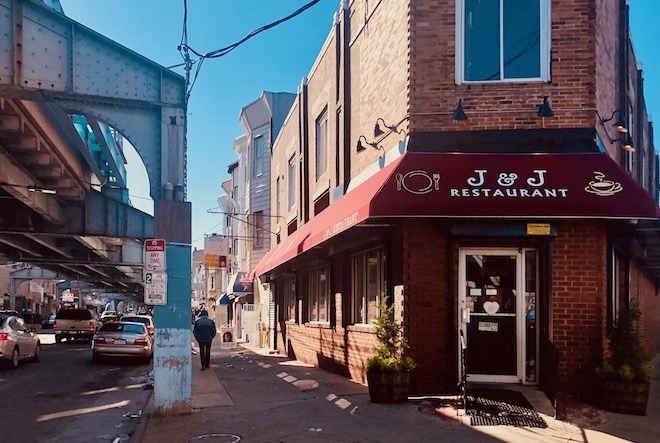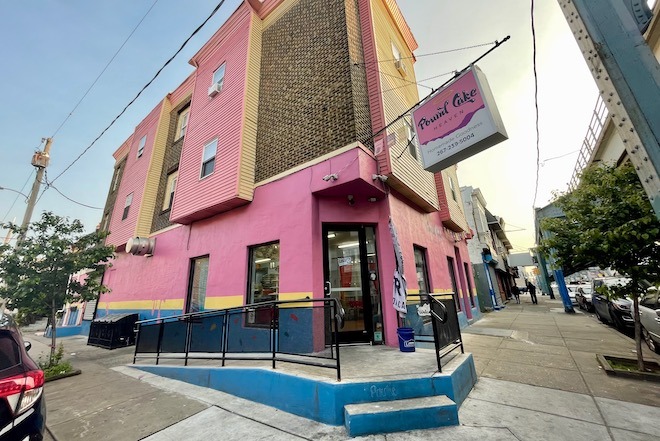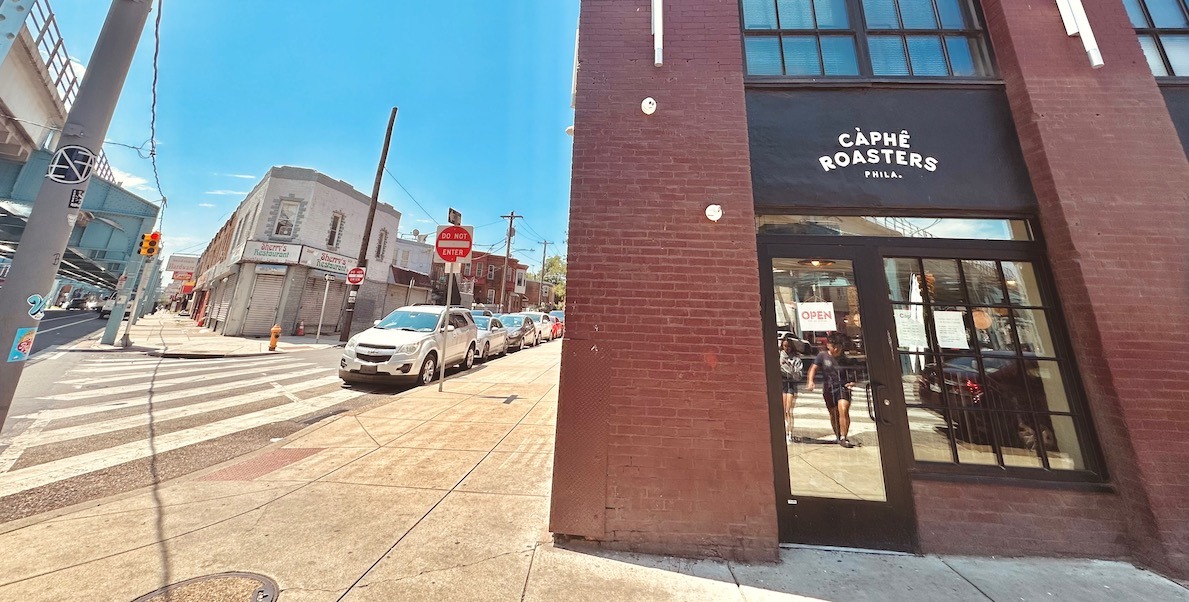Mayor Parker has pledged to make Kensington a centerpiece of her agenda — and so far, her focus on the neighborhood has been undeniable. Homeless encampment clearances. Crackdowns on the drug trade. A stronger beat police presence on many blocks of Kensington Avenue. All a part of a five-phase plan to promote “Community Revival.” We are in the early innings, and the feedback is mixed so far, but it’s hard not to admit she’s at least paying attention.
With a new mayor asserting her commitment to change, the year began with measured optimism amongst local residents and leaders. Some of the early focus has had success. Gun violence has sharply declined. Trash clean-ups have become more frequent. As Bill McKinney of New Kensington CDC of New Kensington CDC recently opined: “Now we are at a moment of opportunity.”
But measured optimism should not be conflated with a blind faith — that clearances and greater police presence will fundamentally shift the trajectory of the neighborhood. After all, the city has gone down this path many times before.
At best, the clearances are a prerequisite to long-awaited change. At worst, they exacerbate the trauma of our neighbors struggling with addiction, temporarily pushing a $1 billion drug trade onto nearby blocks, only to return in the not-too-distant future. The City’s current strategy risks repeating this history.

The question then becomes: How can those of us in the public, private and nonprofit sectors ensure that this round of spotlight is different? How do we leverage the combination of optimism and allocation of city resources to actually turn Kensington into a thriving neighborhood? One that would attract national attention for a radically different reason — a comeback story for the ages.
To get there, we need coordinated investment — $1 billion, at a minimum — to lift up Kensington’s existing assets, seed new economic activity and empower community members. Through a mix of innovative policy tools, cross-sector collaboration and political will, it is possible to give this neighborhood a chance to thrive.
We applaud the significant efforts made by New Kensington CDC and Impact Services CDC, who have been working collaboratively with residents for decades. Our voice here is only meant to add to their work — with a focus on improving the small business ecosystem, implementing innovative growth and preservation policy strategies and providing a road map for further investment.
Let’s make it easier to do business in Kensington
At Shift Capital, we know all too well the challenges of being a small business in Kensington. We are one. For the last 12 years, we have grown from two people to over 30, many of whom are from the community and live in Kensington. We work nationwide today, but Kensington is home.
We also know that the City’s current strategy, in and of itself, will not meaningfully create the conditions necessary for a small business to thrive in Kensington.
Imagine yourself as the owner of a restaurant in the Philadelphia area. You have had success and saved up $50,000 that you want to use to open a new location. Would you open that business on Kensington Avenue? Would you bet your life savings on Philadelphia’s leaders being committed to making Kensington Avenue a viable corridor? Do you believe that meaningful investment will follow you to Kensington — that other small business owners will make the same decision?
A comprehensive plan for Kensington is not a new idea: Many have proposed comprehensive strategies in Kensington. However, on the economic development front, we want to see something ambitious and bold, with financial commitments that match the moment.
Right now, you’d need to take a serious leap of faith to make that bet. So long as drugs, violence, and homelessness continue to dominate Kensington’s news headlines, it will remain a tough sell. Changing that perception starts with no-brainer investments like improved street lighting, sidewalk investments and noise-reduction technologies, such as inexpensive railway silencers. But that’s not enough. We need to focus on the entrepreneurs themselves.
Several years ago, we held a Kensington Storefront Challenge — a project that awarded free storefront space and other perks to attract businesses to the corridor. Many years later, most of those businesses were either not able to open or were no longer in business on the Ave. Of the original group, the only one remaining in Kensington is Càphê Roasters — a story of tenacity, community and execution. Today, Càphê Roasters offers positive experiences back to the Ave., creates a safe space for many in the community, and stays committed to the neighborhood.
Càphê is not the only story of success: just look at our tenants at MaKen Studios. One great example is Bioanalysis, a nationally leading bioscience testing company — that has built out a multimillion-dollar bioanalytic lab and employs over 50 people in their fast-growing space in our MaKen South building. When they are asked (almost daily) about why the company is in Kensington (and not the Navy Yard or West Philadelphia), founder and CEO Lake Paul is quick to say that he wants the community to see companies, led by people of color, who he didn’t get to see growing up in similar communities in Miami.

These stories of success did not happen by accident. They happened with deliberate, intentional attraction and support from impact investing capital, mission-driven lenders and public groups like PIDC playing key roles at critical junctures.
But these are exceptions to the rule. Currently, there are not enough resources to help attract, support and drive growth capital for businesses. Cantina La Martina, the two-time James Beard nominated restaurant at the corner of Somerset and Kensington is struggling. They estimate that over half their potential customers end up turning around when coming to the restaurant for the first time. Their lifeline right now is to expand to more stable neighborhoods and rely on Doordash, but their future is uncertain — not out of choice, but out of necessity.
Theirs remains the traditional Kensington business story — one filled with stress, struggle and yearning for elsewhere. But the success stories are there and if we don’t think differently, we will lose them too.
Let’s promote mixed-income density
There is a saying in the real estate industry that “retail follows roofs.” Businesses will migrate where there is demand, and that demand primarily comes from a resident base.
If businesses are the key to a thriving neighborhood, then residential density is the key to thriving businesses. The more residents with stable income in Kensington, the more purchasing power to support neighborhood retail.
A mixed-income strategy goes further than supporting local business growth, it also has been shown to have an incredible impact on the future of Kensington’s youth. Renowned scholar Raj Chetty’s research shows that a mix of incomes within a neighborhood also has a significant impact on upward mobility. For a working class household, cross-class friendships create economic connectedness, which in turn leads to greater opportunity throughout one’s life.
In other words, the benefits of mixed-income density serve multiple purposes anchoring diverse business success and opening doors to upward mobility. Together, these dynamics have the potential to transform the trajectory of a neighborhood. Kensington offers a rare opportunity to be a true mixed-income neighborhood, but it needs support to get there.
Here are three things the city, with participation and input from the community, can do to help:
- We must start with the building blocks for density — zoning.
When the city updated its zoning code in its Philadelphia2035 plan, it introduced a Transit-Oriented Development (TOD) overlay in the areas immediately surrounding Market-Frankford line stops. Looser building height regulations and fewer parking requirements would incentivize developers to build densely. It was thought of as a win-win: The convenience of public transit would increase both building value and SEPTA ridership. And near the Spring Garden, Girard, and Berks stations — where the market was already heating up — an explosion of construction occurred in the last 10 years, both within and outside of the TOD areas.
Kensington, too, is uniquely positioned to grow. After all, it’s proximate to opportunity — only a train ride away is one of the most robust city centers in the country. There is a reason why Kensington once was the neighborhood of workers — and why it can once again be an engine for employers in Philadelphia. But unlike its counterparts to the south, given the neighborhood’s well-known challenges, it’s going to take more than adding the TOD overlay to create residential density.
- Incentives that drive mixed-income communities take time and commitment — and need to kick in during the early stages of the development process
One such incentive is already on the proverbial political table. Following changes to the residential abatement program in 2022, then-City Council President Darrell Clarke proposed restoring the full 10-year tax break for developments that set aside 30 percent of units as affordable. Mayor Parker even expressed support for this plan during her campaign.
And similar programs exist elsewhere — New York’s 485x program mandates 20 to 25 percent affordable units in exchange for a 20-year abatement, while a Texas program extends the tax relief even further. But unlike New York and Texas, Philadelphia has yet to act — despite local political backing and proven success in other states.
- Combine smart residential growth policies with innovative preservation strategies
A tax abatement would be even more effective if paired with a neighborhood owned and governed entity that uses impact investments to subsidize affordable units. This could be accomplished by expanding the mission of the existing neighborhood trust — the Kensington Corridor Trust, which is already preserving affordable units along the avenue.
Coupled with the existing TOD overlays, these tools would turbocharge the mixed-income development that Kensington so desperately needs. They will help businesses grow and create space for residents to thrive, anchoring a vibrant, healthy neighborhood. So long as we are also intentional about community-building, that is — through programming, civic engagement and mutual aid, much of which Kensington’s non-profit ecosystem is already expert in.
That’s the vision we need to build towards.
Place-keeping and wealth-building for existing residents
It is imperative that growth within the neighborhood benefits, not harms, existing residents. Gentrification-induced displacement should not be a foregone conclusion — though it is an understandable concern.
With intentional investment and education, it doesn’t have to be inevitable. In a world where residential development and commercial economies are thriving in Kensington, long-time residents should not overwhelmingly be priced out. They should have a support system to thrive alongside new neighbors and businesses.
Fortunately, Kensington already has some of the most robust, place-based organizational infrastructure in the country to be able to preserve wealth for today’s residents. And so it is uniquely positioned to harness growth for good — if we can grow those preservation efforts too.
Take, for instance, the Kensington Corridor Trust. Five years ago, we — alongside Impact Services, the team behind IF Lab, and PIDC — helped found KCT with the goal to revitalize and facilitate community ownership of commercial real estate along the Kensington Avenue corridor. It’s a one-of-its-kind operation, inspiring other neighborhood trust models across the country — and the subject of Nowak Metro Finance Lab’s recent “First Four Years” report. To date, KCT has acquired more than two dozen properties. That’s 26 sites removed from the speculative market, ensuring neighborhood stewardship and wealth-building for each and every one of them.
Imagine yourself as the owner of a restaurant in the Philadelphia area. You have had success and saved up $50,000 that you want to use to open a new location. Would you open that business on Kensington Avenue? Would you bet your life savings on Philadelphia’s leaders being committed to making Kensington Avenue a viable corridor?
The other key player in the community ownership space is HACE, a community development corporation based in the Fairhill neighborhood — adjacent to Kensington. Through their Good Lands Trust, HACE purchases properties and turns them into for-sale affordable housing. Low/moderate-income households will have rare access to homeownership — and the wealth-building that comes with it.
Together, KCT and HACE are empowering community ownership of both residential and commercial properties. So when investment-induced growth occurs, that many more properties are owned and stewarded by existing community members. Add to that the similarly incredible work of Impact Services and New Kensington CDC to co-create a neighborhood plan, and you’ve got a strong core of advocates and organizations fighting for Kensington’s residents.
Problem is, the number of properties in nonprofit developer portfolios is still relatively small. So while their combined efforts will dramatically transform individual sites, it’s hard to imagine it resulting in a radical change in stability or quality-of-life across the neighborhood.
To ensure stability for Kensington’s existing residents, we need to double-down on the neighborhood’s unmatched wealth preservation infrastructure. Sure, alternative models exist — those mixed-income neighborhood trusts and community investment trusts, to name a couple — but the energy and cost required to launch new organizations would be better spent flowing to Kensington’s existing backbone.
Let’s come up with the philanthropic and public dollars to 10 times the number of properties stewarded by KCT and HACE. And then let’s couple that with education around the Homestead Exemption and home repair funding so that new owners aren’t burdened by increases in property taxes or maintenance costs.
Putting it all together: The Kensington Plan for Economic Development
A comprehensive plan for Kensington is not a new idea: Many have proposed comprehensive strategies in Kensington. However, on the economic development front, we want to see something ambitious and bold, with financial commitments that match the moment.
This is not an exhaustive list, but it is meant to demonstrate that there is a pathway to a better future for Kensington. We need a bold, billion-dollar commitment to growth and place-keeping to super-charge existing developments in the community and to seed new strategies, many of which are outlined above.
Brian Murray is the co-founder of Shift Capital, an impact urban real estate group based in Kensington. Elam Boockvar-Klein, Shift intern and graduate student at the University of Pennsylvania, contributed to this article.
The Citizen welcomes guest commentary from community members who represent that it is their own work and their own opinion based on true facts that they know firsthand.
![]() MORE STORIES ON KENSINGTON FROM THE CITIZEN
MORE STORIES ON KENSINGTON FROM THE CITIZEN




